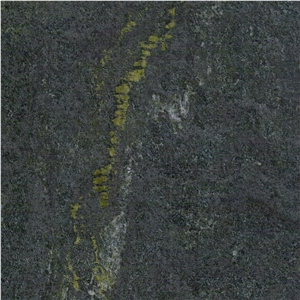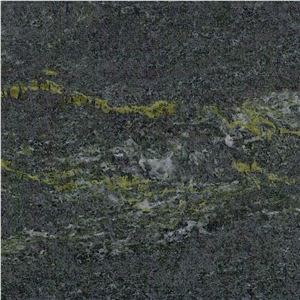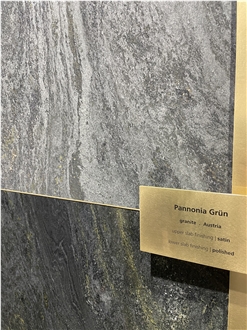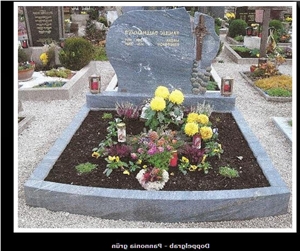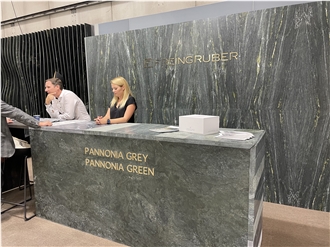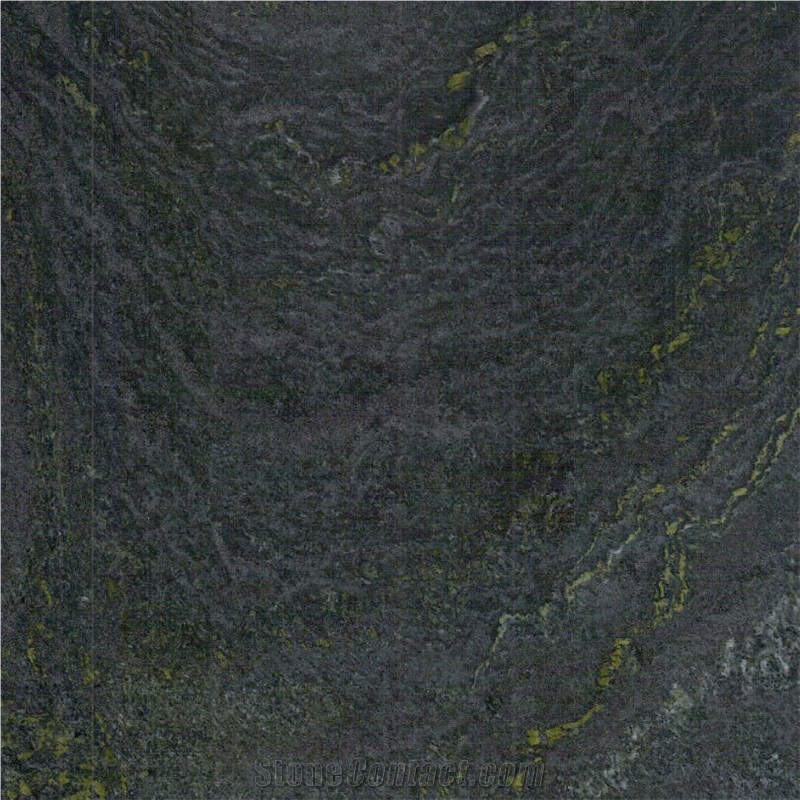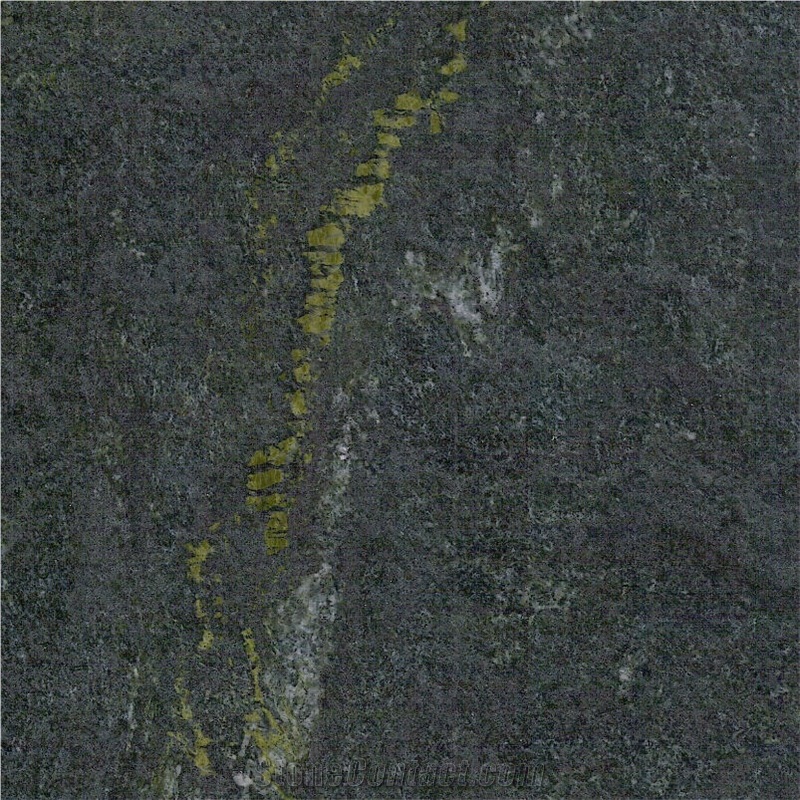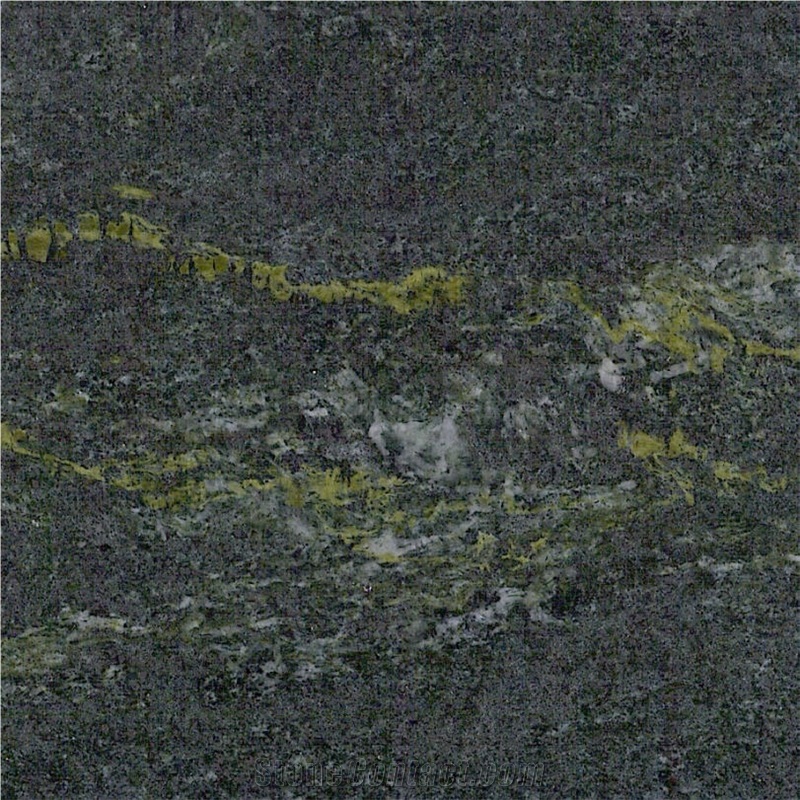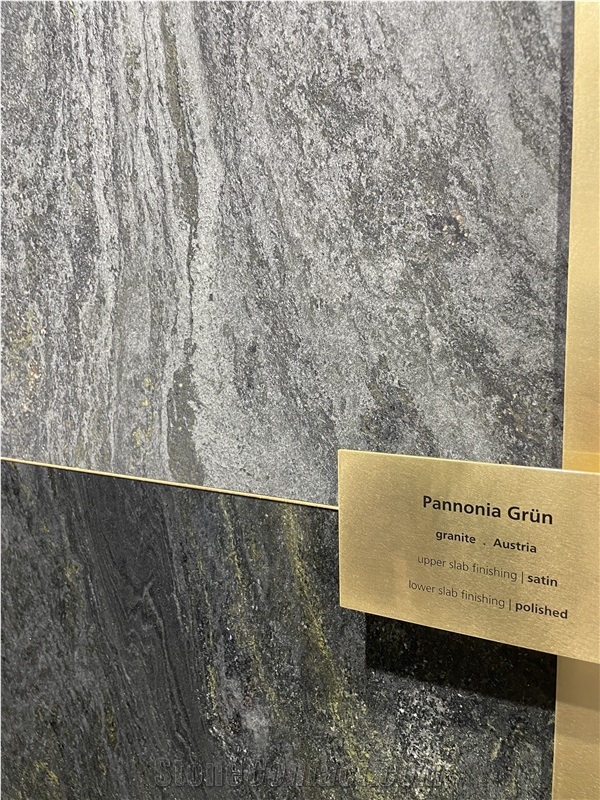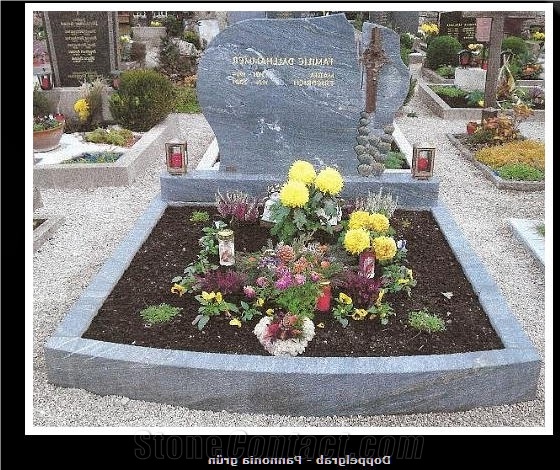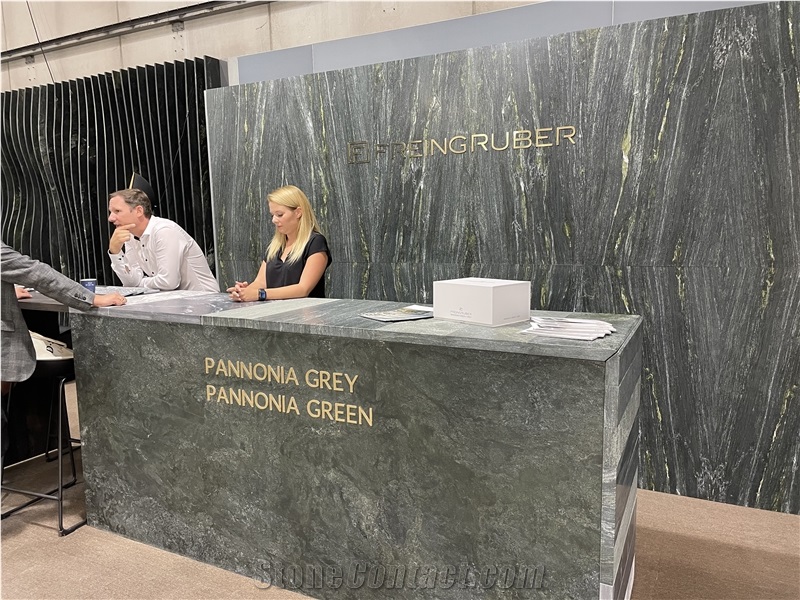Pannonia Green Schist
 Austria
(Geschriebenstein, Rechnitz, Burgenland)
Austria
(Geschriebenstein, Rechnitz, Burgenland)
Pannonia Green Schist is a striking, high-quality natural stone distinguished by its rich dark green background accented with light jade green and white grains that gracefully weave across the surface. The interplay of colors creates a visually textured, dynamic pattern, enhancing its sense of depth and vibrancy. Quarried in Rechnitz, a historic town in southern Burgenland, Austria, near the Geschriebenstein Mountain, Pannonia Green is sometimes marketed as a slate due to its fine foliation. However, its true geological classification is chlorite schist, a metamorphic rock characterized by the presence of aligned platy minerals.
Texture and Pattern:
Texture: Fine- to medium-grained, moderately foliated
Pattern: Flowing, soft veining with light green and white mineral grains distributed across a deep green matrix
Finish: Naturally split layers, slightly rough exfoliated surfaces, or sawn surfaces, with options for polishing or brushing for enhanced applications
Technical Properties:
- Water Absorption: 0.34 %
- Density: 2,930 kg/m³
- Flexural Strength: 19.9 MPa
- Compressive Strength: 94.8 MPa
- Hardness (Mohs Scale): Approximately 5.5–6 (typical for chlorite schists)
Chemical and Mineral Composition (% by weight):
- Chlorite (clinochlore dominant): 45–55%
- Quartz: 20–25%
- Plagioclase Feldspar: 10–15%
- Muscovite/Sericite: 5–8%
- Accessory minerals (magnetite, epidote, titanite): ~2–3%
Chemical Analysis (Approximate):
- SiO2 (Silicon Dioxide): 45–50%
- Al2O3 (Aluminum Oxide): 12–16%
- Fe2O3 (Iron Oxide): 8–12%
- MgO (Magnesium Oxide): 5–8%
- CaO (Calcium Oxide): 2–4%
- Na2O + K2O (Sodium and Potassium Oxides): 2–3%
Cutting Sizes (Standard Production):
Tiles:
- 30 × 60 cm (12" × 24")
- 40 × 40 cm (16" × 16")
- 60 × 60 cm (24" × 24")
- 40 × 80 cm (16" × 32")
- Custom sizes on request
Slabs:
- Typical thicknesses: 2 cm (3/4"), 3 cm (1 1/4")
- Large formats possible depending on block quality
Surface Finishes Available:
- Natural split (cleft)
- Honed (smooth, matte)
- Brushed (antique finish)
- Polished (brings out deeper colors)
- Flamed (for slip resistance, especially outdoor use)
- Sandblasted
Usage Applications:
Interior:
- Flooring
- Wall cladding
- Bathroom vanities
- Kitchen countertops (with proper sealing)
- Staircases
Exterior:
- Facade cladding
- Outdoor paving
- Landscaping elements
- Pool surrounds
- Pannonia Green Schist’s low water absorption and high compressive strength make it highly suitable for freeze-thaw climates and heavy-duty flooring applications.
Maintenance:
Regular cleaning with pH-neutral stone cleaners
Periodic sealing recommended (especially for polished and honed surfaces) to protect from staining
Avoid acidic cleaners which may etch the surface Occasional re-brushing or re-honing can refresh heavily used areas
Summary:
Pannonia Green Schist blends vibrant aesthetics with robust mechanical properties, offering durability and elegance in both modern and traditional architecture. Whether used indoors or outdoors, it brings a distinctive natural beauty that stands the test of time.
 Bjö****
Reviewed in Sweden on Apr 28,2025
Bjö****
Reviewed in Sweden on Apr 28,2025
Why do you call it a slate? I wonder what the proper geological description is? I think it is gneiss or schist? I think it would be beneficial for you to use the proper geological denomination. Kind regards! Björn
 Sou****
Reviewed in Spain on Mar 01,2024
Sou****
Reviewed in Spain on Mar 01,2024
Hello, We are a Spanish terrazzo manufacturing company "Mosaic Factory" and we are interested in starting to use "Pannonia green marble" for the design of our tiles and we have some questions regarding "Pannonia Gruen": Is it true that Panonia Gruen does not contain asbestos? Can we obtain a certification that proves it? Many of our clients ask us to use stones that do not contain asbestos. Best regards,
The request includes: 1. surface finished, size 2. quantity required







